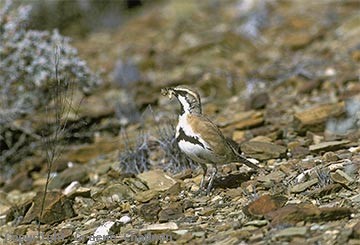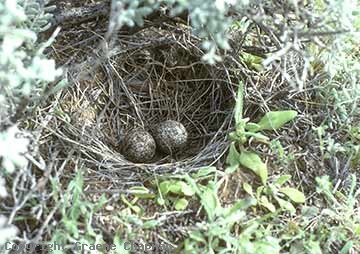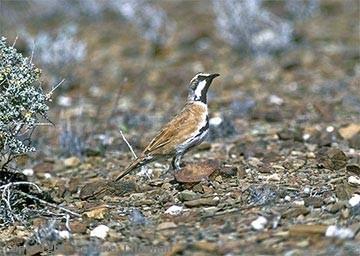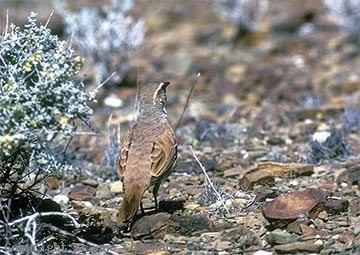Australian Birds
Cinnamon Quail-thrush
Cinclosoma cinnamomeum
(Viewing 4 of 8 photos)
|

The arid chenopod shrublands on the rocky hills and plains of the inland are where you'll find Cinnamon Quail-thrushes. They are birds of the open country where trees are largely confined to the watercourses and the remaining vegetation is comprised mainly of acacias and saltbush. They occur in three states - northern and north-eastern South Australia could be called their stronghold, but they do sneak into the NW corner of NSW. In Queensland they are found in the far SW, north to about Sandringham Station and east to Thargomindah. Like most quail-thrushes they are regarded to be territorial and resident but no detailed studies have been made. They do eat quite a bit of vegetative matter which might stand them in good stead in their harsh environment. When foraging they move slowly with a distinctive manner of walking, lifting the feet high and turning this way and that (see pic #439205). I have found them one of the easier quail-thrushes to observe, maybe in their open environment you can see them from further away. Once upon a time the Cinnamon Quail-thrush was lumped with both the Nullabor and Chestnut-breasted Quail-thrushes in one large, variable species with a very wide distribution. The biology of all three forms is quite similar but until some full-scale long term study is undertaken (a formidable task) their status will remain uncertain. So far, they have managed to withstand the onslaught of grazing in the rangelands but their future also, remains uncertain. They matter little in the scheme of things these days.
|

439201 ... Cinnamon Quail-thrush, adult male, Mt. Lyndhurst, S.A. |

439202 ... Nests are usually placed under the shelter of a shrub. Clutch size is usually two. |
 |

439203 ... Cinnamon Quail-thrush, adult male, Mt Lyndhurst, S.A. |

439204 ... Quail-thrushes blend well with their surroundings. |
 |
Previous 1 2 Next
Return to Photo Library page




